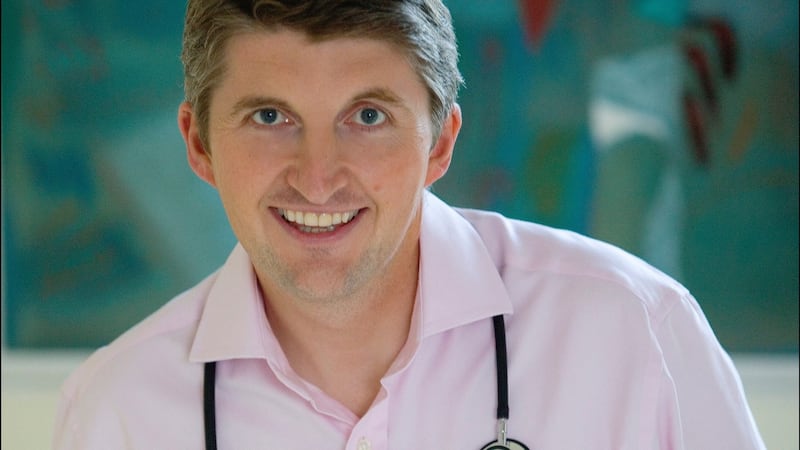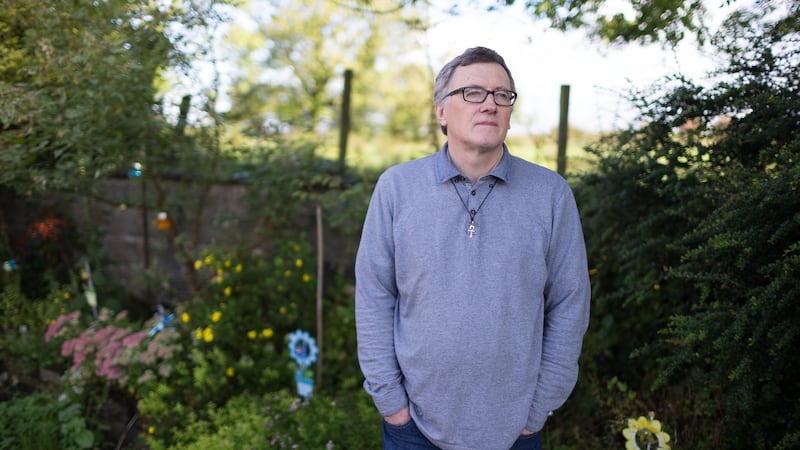‘I don’t really believe in burnout,” said Marissa Mayer, the Yahoo chief executive, who famously took two weeks’ maternity leave and boasts that she only needs four hours’ sleep. “A lot of people work really hard for decades and decades, like Winston Churchill and Einstein.”
To Mayer, speaking in New York in 2013, “burnout” is just another name for employee resentment. To others, it’s a trendier label for depression or anxiety. Still others regard it as simply an excuse to opt out.
Strictly speaking, there is no medical diagnosis of burnout, a term coined by the American psychologist Herbert Freudenberger to describe a phenomenon he had witnessed while working with drug counsellors in the 1970s.
There is also no definitive data across the wider population – although one major study published in the Journal of the American Medical Association earlier this year found that more than 50 per cent of physicians have experienced at least one of the three signs of burnout.
To those experiencing burnout, it doesn’t matter what Mayer says, what the data says, or even what the science says. It doesn’t matter, either, that modern life is filled with conflicting parables celebrating extreme devotion: Mayer’s 138-hour weeks; Sheryl Sandberg’s “lean in” philosophy; the sleeping bag Elon Musk keeps beside the Tesla production line; the fact that Steve Jobs remained on as Apple chief executive until six weeks before his death.
For those who have suffered it, burnout is real. And it can be devastating.
Burnout is how, one day in 2012, then 37-year-old Natalie Garland Cooke came to find herself lying on the floor of her office, unable to move.

“I was working as a sales and marketing manager in a demanding environment. My boss was on the road. I was in the office, and I started to feel so ill – it was like my body wanted to give up. I had to put myself on the floor, and I couldn’t move for 20 minutes. It was like an out-of-body experience. I couldn’t even move my hand. It was like every bit of energy and blood had been sucked out of me.”
Cooke managed to get to the phone to call her husband, who came and drove her to her general practitioner. The GP instantly signed her off work with stress.
Looking back, she can see that a number of factors had led to her burnout. “I was looking after my husband, who had a chronic illness that meant he was unable to work. I’d been doing the jobs of 3½ people on my own. We were going through IVF, and it wasn’t happening. We had negative equity. It was coming at me from all angles.”
I've had to learn that self-care and self-compassion isn't selfish
Her GP prescribed antidepressants, and she embarked on counselling twice a week to try and get to grips with what had happened to her. “The panic takes over and you’re panicking because you’re panicking. I used to wake up at 2am and start walking the halls, holding on to handfuls of my hair. It was hideous – I wouldn’t wish it on anyone. When I learned to say that my body is telling me I’ve done too much, I began to heal.”
Cooke returned to her job, and remained in the role for another four years, until she suffered a back injury. At that stage, with the environment at work showing no sign of improving, she decided to set up on her own as a consultant. Her new business is thriving, which is creating its own demands. “This year, I’m very aware that I’ve nearly burned through my reserves again. I’ve had to learn that self-care and self-compassion isn’t selfish,” she says.
“Burnout is absolutely real,” says Dr Mark Rowe, a medical doctor, author and expert in lifestyle medicine. “It can affect anybody. It is common. But it can be effectively treated. In essence, it is the long-term impact of chronic negative stress, and it leads to three distinct manifestations.

“Firstly, a sense of detachment and cynicism. Secondly, a sense of exhaustion – not just physical, but a profound emotional exhaustion, the feeling that you’ve lost your spark. The third element is a lack of personal accomplishment. A lot of high achievers are the ones who are most at risk for burnout, and their natural instinct when they start to feel burnt out is to pedal faster on the treadmill.”
Work done by researchers Maslach, Schaufeli and Leiter, and published in 2001 in the Annual Review of Psychology, identifies six risk factors for burnout: mismatch in workload, mismatch in control, lack of appropriate awards, loss of a sense of positive connection with others in the workplace, perceived lack of fairness, and conflict between values.
Although anyone can experience burnout, research has shown differences in how the genders deal with it, and how and when they seek help. A 2011 study of Dutch GPs found women typically experience exhaustion first, followed by cynicism, then inefficacy. For men, cynicism comes first, then exhaustion.
“Women tend to be more in tune with it, and can name it themselves. The two most common things we see them for are ‘tears and smears’,” says Niamh, a GP at a busy rural practice. “They’ll come to us for gynaecological issues, or issues related to anxiety or depression. Or sometimes they come in for a smear, and the tears come after.”
Some men would actually be happier if you said they were having a heart attack than an anxiety attack. They see it as a weakness
Men often come in with unrelated, vague physical symptoms. “Some men would actually be happier if you said they were having a heart attack than an anxiety attack. They see it as a weakness,” she says.
“As they’re leaving, you’ll say ‘is there anything else?’ and they’ll have their hand on the door, and then they’ll turn back, and it will all come out.”
Rowe says society’s expectations of men can exacerbate the issue. “The essence of how society judges us as men is that who we are is what we do. If we’re not able to do what we’re supposed to do, then who are we?”
Like Natalie Cooke, Patrick Stack’s burnout was caused by the collision of a number of internal and external factors. Unlike Cooke, he didn’t see it coming.

“Last year in April and May, I went thought a very intense period of work for about six weeks. I work as a part-time adult education tutor and run my own business as a web developer. I was putting in 70 to 80 hours a week, but I was feeling great. I didn’t realise I was emptying the tank.”
Then in June, the 59-year-old began to feel tired. “It was gradual, very insidious. It’s like this vague feeling of unease. A stain on the horizon. It gradually built up. I had a very bad summer. I wasn’t suicidal, but I lost the sense of joy in everything, even the taste for my food.”
Often, burnout can manifest itself in similar ways to depression, leading to some of the scepticism about whether it exists as a separate entity. A 2013 study in the Journal of Health Psychology found no diagnostically significant differences between burned out workers and patients suffering from clinical depression.
I had a bout of depression 15 years ago, but this felt different. I was suffering from extreme anxiety and tension.
But for Stack, burnout felt different. “I had a bout of depression 15 years ago, but this felt different. I was suffering from extreme anxiety and tension.”
By November, his sleep was affected, and he was having nightmares. In December, he sought help from his GP, who prescribed antidepressants. Within a week, Stack began to feel more normal. His doctor had also suggested counselling, but he resisted until May of this year, when his hours started to pile up again. Through counselling, he was able to explore some of the traumas in his childhood which predisposed him to pushing himself to breaking point. “I’m an overachiever. No matter what I did, my father wasn’t pleased, so I put it down to that.”
Jane’s burnout was a response to difficult environment. She was 31 and an aid worker in Somalia, where she was putting in 14-hour days. “Aid work is notorious for burnout. There is an expectation that you’ll be worked to the bone for 12 weeks, get two weeks off, and be fine again. It’s not healthy, and there’s lots of chatter in the sector about burnout and stress. But in my case, it wasn’t the country or the work itself. It was the working culture.”
Her problems stemmed from her dealings with a difficult boss. “He would shout a lot in meetings and in interactions with me. I would say I’m conflict-averse. I would come out of meetings and be almost in tears, which isn’t like me. I was less able to process things, I was getting upset and sad about small things. I had a couple of panic attacks, but it was more the constant level of anxiety the whole time. I was working crazy hours, and not getting anywhere, and my manager was throwing obstacles in my path all the time. The systems weren’t in place to help me deal with it, so I felt I was set up to fail, no matter how hard I worked.”
We lived in a compound, so you basically lived in the office. The people you hang out with all the time are the people you work with, so everything is intensified, and the lines are blurred.
The intensity of her living situation didn’t help. “We lived in a compound, so you basically lived in the office. The people you hang out with all the time are the people you work with, so everything is intensified, and the lines are blurred. I’d cut myself off from social occasions to avoid having to see my boss.”
She resigned from her job with the aid organisation, but stayed on to complete her posting. “I instantly had this huge gush of relief, and things were easier from then on. I hoped things might get better for my colleagues – I wanted to feel something good might come of it.”
There are few studies on the subject, but one recent survey of 600 heads of human resources from organisations of all sizes suggests burnout is widespread in corporate life. It found that nearly half of HR leaders attribute up to half of their turnover to burnout.
One of the factors behind the rise in work-related stress and anxiety is technology, the era of the always-on employee. But used properly, technology can also help alleviate some of those stresses, says Clodagh Logue, the Dublin-based International HR leader at Fitbit.
“Ironically, the solution is probably to be found in the area which can also cause the problem: technology can help many employees work at times and places where they are most productive and that may not be during conventional working hours or in an office setting.”
But to allow this to happen, she says, “organisations need to build a culture of trust to underpin that flexibility”. This means focusing on performance “in ways that are not about being physically present or ‘always on’”.
Acknowledging that reality, and leading by example – actually taking holidays, visibly and obviously leaving to fulfil a personal commitment and encouraging others to do the same – can also help set the tone and create a healthier work environment.
In addition, those in senior positions need to think about the example they’re setting, Logue says. “Regardless of whether we’re the ceo or a junior intern starting out, relentless and continuous performance is not sustainable indefinitely. Acknowledging that reality, and leading by example – actually taking holidays, visibly and obviously leaving to fulfil a personal commitment and encouraging others to do the same – can also help set the tone and create a healthier work environment.”
How can individuals – or their GPs or employers – tell the difference between the normal anxieties caused by the condition of being alive, and true burnout?
Niamh, the GP, points out that stress is not just unavoidable, “we all need a bit of stress and anxiety to function. It’s when that stress stops you from doing things you want to do that it becomes a problem. People who are suffering true burnout will go from being a productive, positive person to being someone who has difficulty functioning, who may not be able to get up in the morning, who may not be eating, who is completely crumbling at work. Usually, by the time they come to their GP, they’re desperate for help, and they’ll take any help you can give them.
“Then there are other people who might reach for the anxiety label as a way to opt out, because they know that as soon as you say ‘anxiety’, the bank or your boss or whoever it is will back off. But that shouldn’t take from the fact that in real and genuine cases of burnout, it is debilitating and they need help,” she says.
To tackle burnout, she believes a more fundamental reimagining of our values as a society is needed.
“I think we need to return to simpler values. People come to see us in a heap about money. But when you have a conversation about them, their expectations of what’s normal are way out of line. I saw someone recently who was eating cornflakes all week, and then spending €60 treating the children at the weekend. We didn’t all grow up having treats, whether it’s weekly takeaways or holidays twice a year. We need to get back to a time when we helped each other, and when we weren’t so focused on accumulating material things.”
Patrick Stack agrees that a major rethink of our values is required. “I don’t like the way society is going, in that everything is valued in terms of money rather than your worth as an individual. If there’s one thing I learned, it’s to be kind to myself – being kind to yourself is not selfish.”
For Rowe, the prescription is to strive for more balance. “Pursue your outside interests. Having a sense of purpose is very protective for your mental health. Try to align who you are with what you believe in, so that you don’t solely define yourself by what you do.”
Some names have been changed
If you feel you are suffering from burnout, discuss the problem with your GP. The charity Aware (1800 80 48 48) provides support on mental health issues











